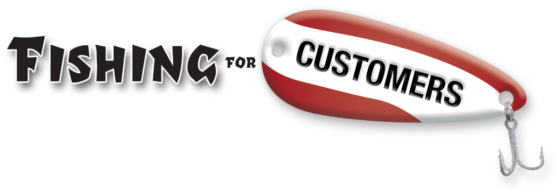Pretend with me that you run Acme Office Supplies. You’ve just conducted a survey asking your customers why they shop with you. The overwhelming answer: convenience.
Is your research done? Do you tell people how convenient you are in all of your advertising and wait for more folks to say, “Yes. I’ve been hoping to become aware of a convenient office supply store. I shall go there now to purchase supplies?”
Too many store owners would. I’m here to suggest a more effective use for your advertising dollars. This technique is derived from RFM Analysis, a tool I frequently use with new clients.
Today We’re Going to Concentrate on the “F”
The “F” in RFM stands for Frequency. Sort and rank your active customer base by the number of purchases they made from you last year, with the higher numbers at the top. Some numbers will be the odd loner. Others will cluster to form groups. I predict you’ll see patterns which can provide a great deal of marketing information.
I’ve chosen three clusters for illustration. Customers who bought 50 times in the last year, those who made 12 purchases, and those who only came in twice. These numbers correspond with weekly, monthly, and a couple of random purchases of office supplies.
What Motivates These Purchasing Patterns?
Wouldn’t you suspect that anyone purchasing weekly is experiencing cash flow issues? He needs the profit from this week’s sales to fund the supplies he needs to conduct business next week.
The monthly buyer likely values his time. Because of that, he keeps a well-stocked supply closet and doesn’t make unplanned trips to the store.
Twice a year? This guy is not one of your regular customers. He has his own preferred supplier, but found himself on your side of town just before closing time and needed something before he could get back to his regular store.
Here’s the Interesting Part
All three of these clusters of customers may very well tell you their prime motivation is “convenience.”
- Convenience to the weekly shopper picking up getting exactly what he needs, only as he needs it.
- Convenience to the monthly shopper is never running out of supplies before he’s ready to make his monthly shopping trip.
- Convenience to the occasional shopper is not having to drive to his favorite store when its really out of the way.
The message which resonates with each will be somewhat similar to the others, and yet, not quite right for any other business. Our second customer, for instance, doesn’t share the first’s concern about cash flow. Our third never considers stocking up.
So, is a single advertising message the way to go? We both know it’s not. However, there is a similarity that can be summarized by the “convenience” answer on your survey. We can still use that similarity.
Build a Campaign
Give examples of each under the “we’re convenient” umbrella. How about, “What does convenience mean to….”
“What does convenience mean to Robert Smith?” followed by Robert’s explanation that in this economy, he makes every dollar work it’s hardest, and Acme Office Supplies keeps in stock everything he needs. The ad could end with “Acme is convenient… whatever that means to you.”
“What does convenience mean to Jack Johnson?” Jack’s story centers around the value of his time, and again closes with “Acme is convenient… whatever that means to you.”
And convenience to Debbie English? Debbie could tell about Acme’s location, or its hours of operation, or that it’s open weekends. Regardless of the specifics of Debby’s hot button, the closing will tie back to the campaign. “Acme is convenient… whatever that means to you.”
Dig a little deeper and you’ll find Neil, and Sally, and Rick. Each has a story that can help to build Acme’s image, and tie the overall campaign into one memorable whole.
Rotate the ads if they run on TV, on Radio, or in the Newspaper. Send the individual ads as postcards to customers in the appropriate clusters.
One Additional Step
With your new understanding of customer group motivation, can you offer inexpensive customization of your services?
Could you create an order form for Robert that let’s him check off the supplies he needs this week, or perhaps list his usual purchases but leave blanks so he can fill in the amounts? Robert could fax the order to you, and you could deliver it first thing in the morning.
Could you send someone to Jack’s office with his custom order form – one that you and he developed together to determine his optimum level of supplies? You could schedule that appointment weeks in advance, survey his stockroom, and just like you do for Robert, deliver tomorrow morning. Because of his time sensitivity, Jack would find this service exceptionally valuable.
Customize once. Re-use indefinitely. And customized bait usually works better when you’re fishing for customers.
Your Guide,
Chuck McKay
 Your Fishing for Customers guide, Chuck McKay, gets people to buy more of what you sell.
Your Fishing for Customers guide, Chuck McKay, gets people to buy more of what you sell.
Got questions about uncovering strong customer motivations? Drop Chuck a note at ChuckMcKay@ChuckMcKayOnLine.com. Or call Chuck at 760-813-5474.

